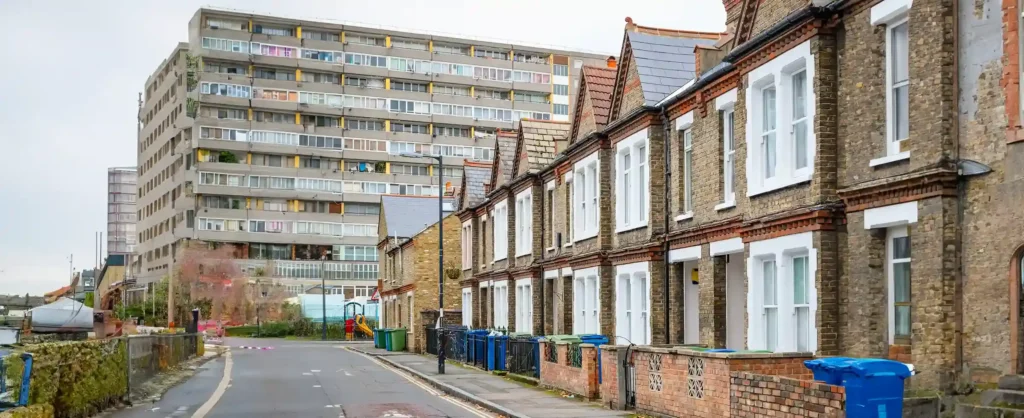When the impact of the housing and cost of living crises are discussed, the challenges to housing security caused by rent hiking, inflated mortgage rates, and a lack of affordable and social housebuilding are often explored in the context of the younger generations. In recent years, however, older people in the UK have been exposed to their own issues in an unaccommodating housing market.
In 2018, England saw a record number of homeless pensioners, with a ten-year high of more than 2,500 people over the age of 60 lacking permanent accommodation. Since then, a host of studies and reports on the quality and availability of housing for older persons have led to damning evidence of how severely they are being impacted by the housing and cost of living crises.
But in what ways are older renters and homeowners being let down by the housing market? And what can stakeholders in that market do to support their needs?
Why Prioritise Housing for Older People?
A clear need for housebuilding that places a greater priority on accommodating older people is a common thread in research on the subject.
According to a recent census by the Office for National Statistics (ONS), there were an estimated 11 million people in the UK aged 65 and older in 2021, comprising 18.6% of the country’s total population. This represented a significant growth since the 2011 census, in which those aged 65 and older made up 16.4% of the UK’s population. The ONS also suggests that, by 2045, the number of people of pensionable age will increase by 28% while the number of working-age people and children is projected to stagnate in 2030.
With the proportion of older people in the UK rising, the number of households that will require accessibility options is also expected to see a sharp increase. A 2022 report by old age charity the Centre for Ageing Better anticipates a decline in the number of years the average UK citizen can expect to live in good health without a disabling illness or condition, falling to 62.4 years for men and 60.9 years for women. This could mean a greater number of people requiring accessibility options for a longer period as they age. The same report also revealed the following:
- The UK state pension is one of the worst in Europe, providing just 58% of previous earnings from work. This is below the Organisation for Economic Co-operation and Development (OECD) average of 62%.
- The number of older private renters reached an all-time high in 2022, with 867,000 homes being rented by someone aged 55 or older.
- Almost one in five homes headed by someone aged 60 or older is in a condition that endangers the health of the people who live there.
- Only 9% of UK homes have all four of the accessibility features that make them visitable by those with disabilities (a WC at entrance level; flush threshold; sufficiently wide doorways and circulation space; and level access).
According to research carried out by the International Longevity Centre in their Mayhew Review, 1 in 4 new homes will need to be tailored to older people to meet the demands of the ageing population, totalling around 50,000 specialist homes being built each year. Currently, the UK falls well below that target, with only 8,000 new senior homes built in 2022 across 145 affordable or social housing schemes.
As the housing crisis continues to put housing affordability in the crosshairs, the growing, ageing population of UK homeowners and renters will likely experience more cost-of-living challenges and be unable to find housing capable of properly sustaining their way of life. Currently, less than 5% of those aged 55 or older benefit from specialist housing facilities and less than 3% of the UK’s housing stock is tailored towards the retirement market.
With experts from the UK Green Building Council (UKGBC) estimating that 80% of the homes we will be living in by 2050 have already been built, adapting our existing supply of housing to older people while exploring alternatives to traditional housebuilding may be the best available solution for meeting the extreme housing demand.
Are They Stuck in Substandard Housing?
The UK housing market has proven to be an unwelcoming place for older renters and homeowners, forcing many to settle for substandard housing unsuited to their needs. A combination of factors then renders those older people incapable of moving somewhere more appropriate, effectively leaving them “stuck”.
Analysis by the Centre for Ageing Better shows that almost half of the 4.3 million non-decent homes in the UK housing market are occupied by someone over the age of 55 and that the number of older people living in these homes is on the rise. Worse still, nearly half of older adults who left the workforce in 2020/21 ended up in relative poverty according to the Institute for Fiscal Studies, a situation that has largely worsened thanks to the rising cost of living.
One in five older people in the UK further reported being trapped in their current housing due to a shortage of suitable alternatives, with 4 million people aged 55 or older struggling to act on their plans to move due to an inability to find affordable homes with the right location and tenure. This issue has only been magnified for older private and social renters, the proportion of which doubled from 6.3% in 2010/11 to 11.3% in 2020/21. Currently, the average cost of moving for a homeowner is £14,000 and that cost rose by as much as 21% in the past year.
Besides their issues with substandard housing, many older homeowners occupy homes with excessive and inefficient space due to a lack of alternatives. The number of surplus bedrooms in homes owned by those aged 65 or older is predicted to rise from 6.6 million in 2000 to 12.8 million by 2040. Likewise, older households are considered the least efficient users of housing space, averaging at a 40-60% efficiency due to under-occupation.
While substandard or inappropriate housing can seem like a major obstacle facing older people in the housing market, solutions are not as inaccessible as they may seem. The Centre for Ageing Better, for example, suggests that, although first-year treatment costs for over 55s living in the poorest quality housing is estimated to cost the NHS a total of £513m per year, a third of the non-decent homes that contribute to their health issues could be brought up to a decent standard for just £1,000 each.
Investing in Affordable Modular Housing for an Ageing Population
At Concept Capital Group, we work with private investors like you to manufacture and place affordable modular homes that offer an alternative source of comfort and security for vulnerable and low-income tenants displaced by the ongoing housing crisis.
As we enter 2024, one of our major initiatives involves rolling out homes designed to support the needs of vulnerable tenants using assistive living technology. This will not only offer them an appropriately sized and affordable alternative to traditional private rented housing but also allow them to benefit from our tenancy and property management services that work to place them, address any repairs and manage their concerns with efficiency and compassion.
If you would like to inquire about our upcoming projects or invest in modular housing that supports the UK’s most vulnerable renters, book a call with our team today.













